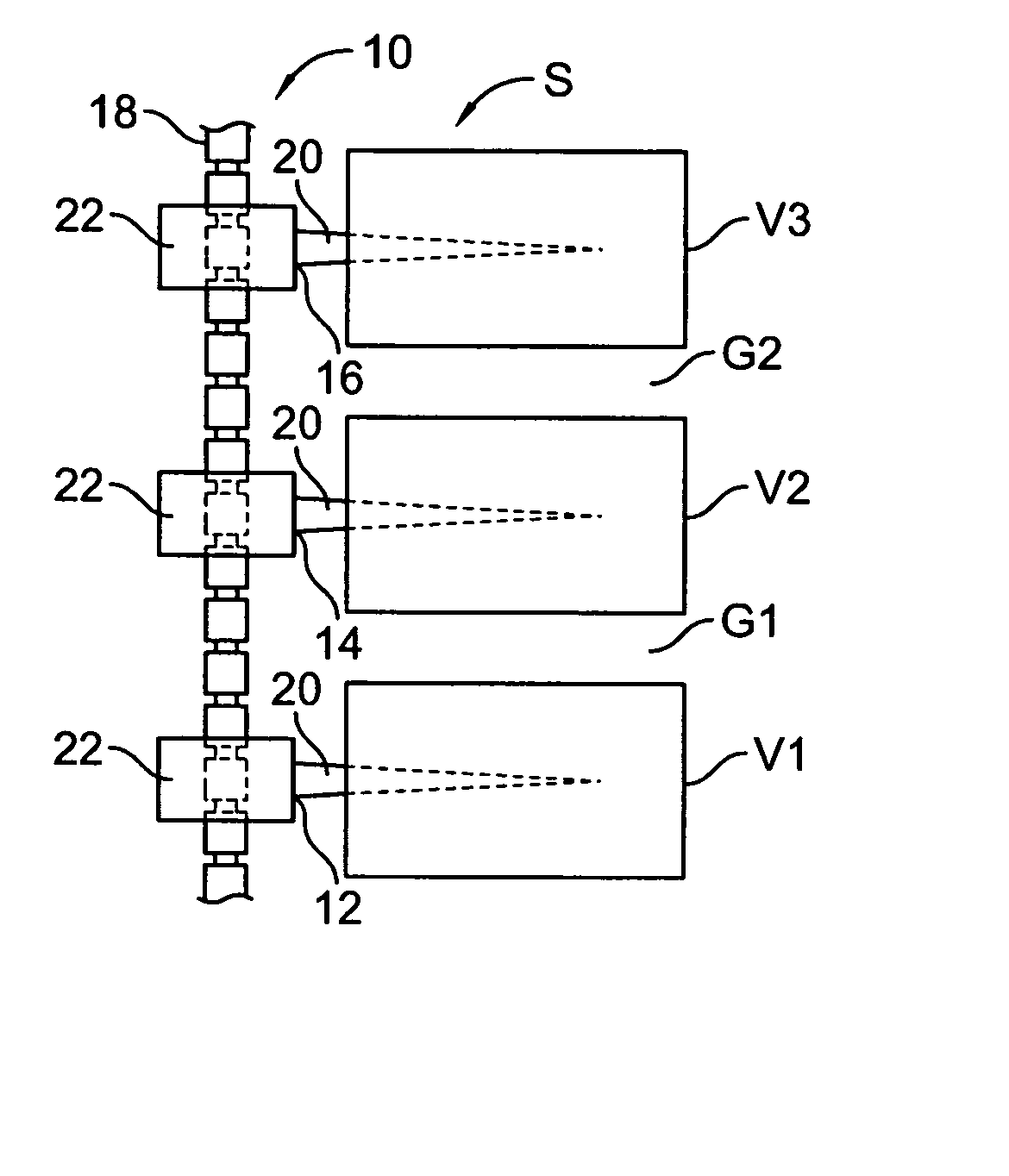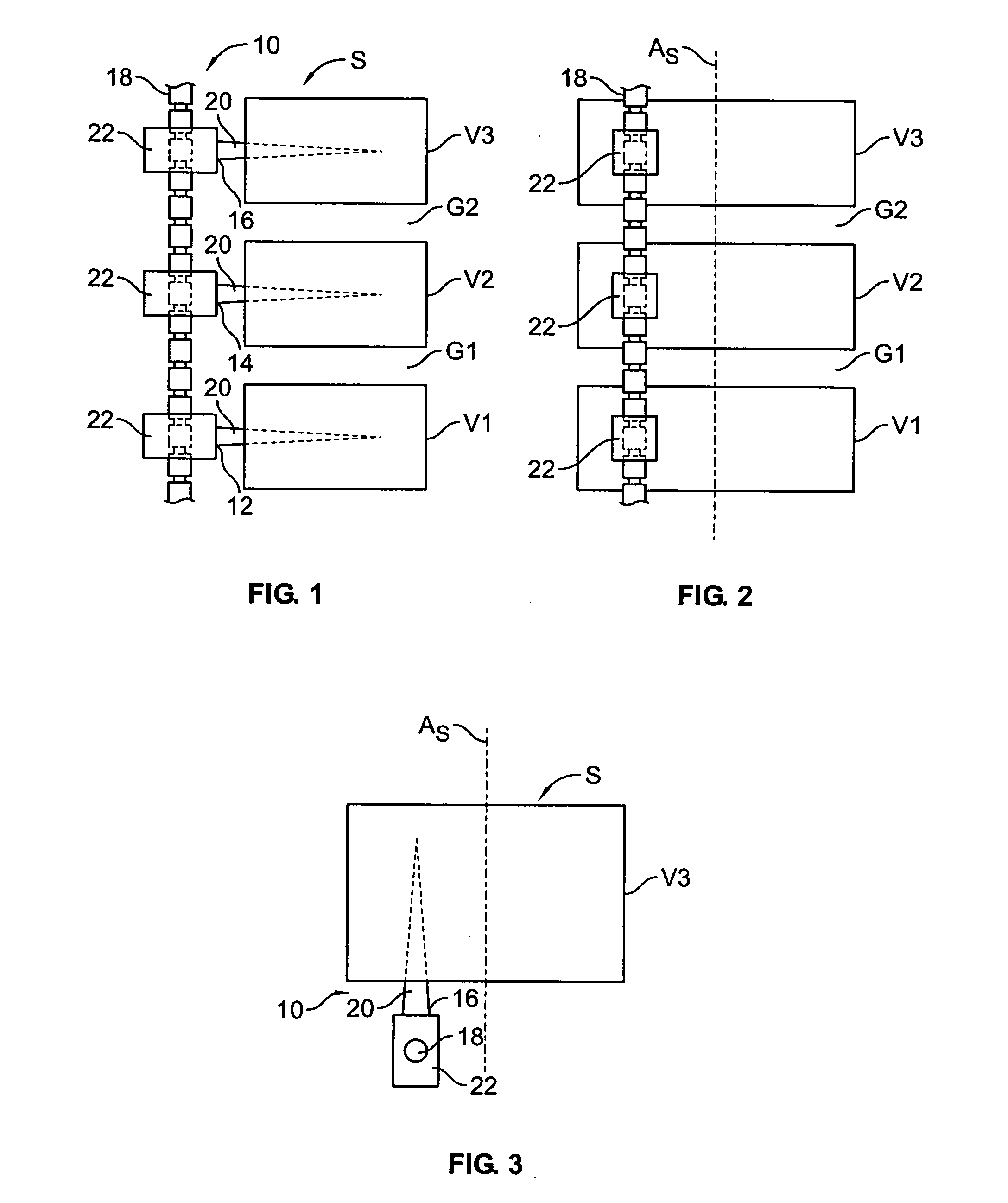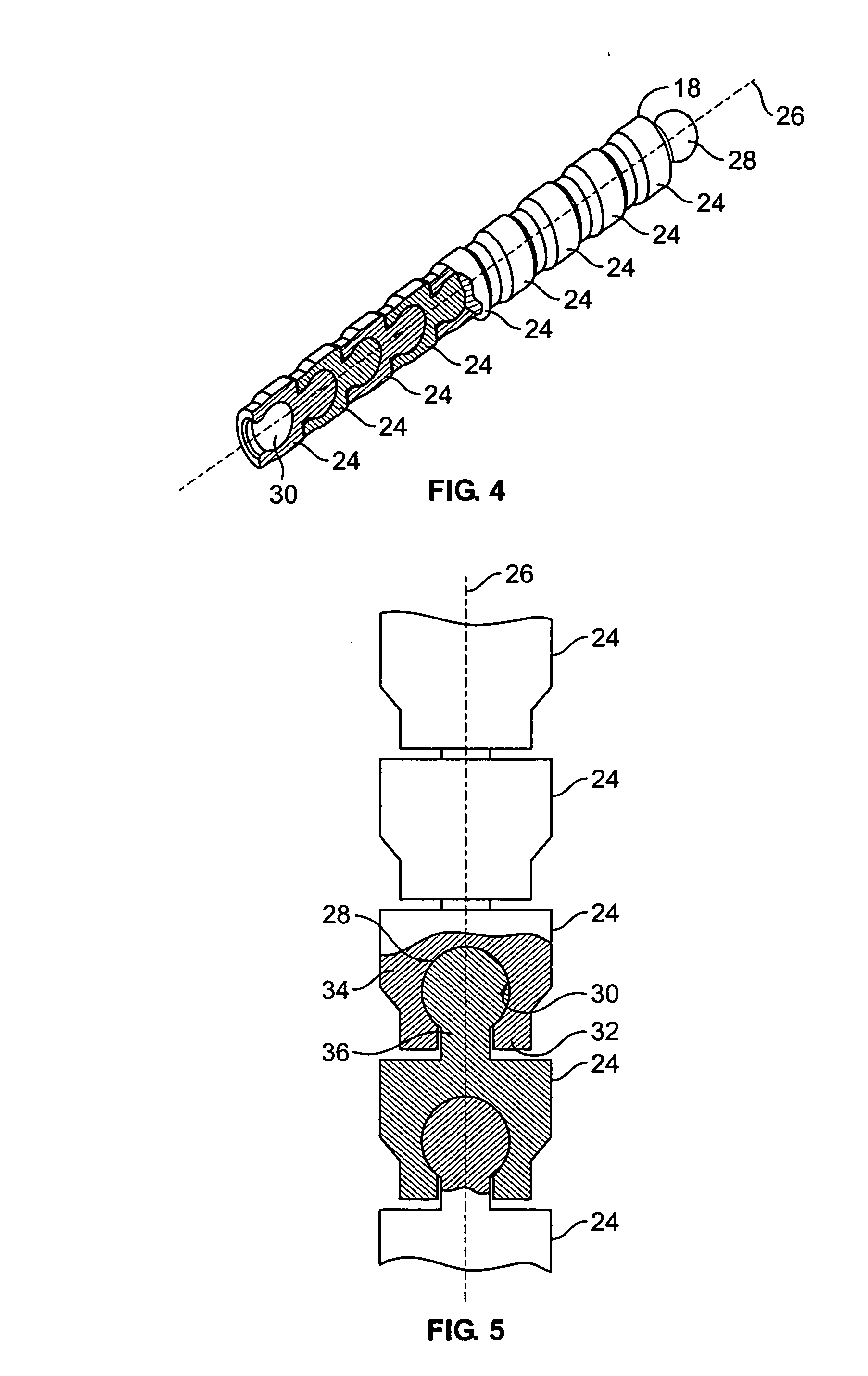Dynamic spinal stabilizer
a spinal stabilizer and dynamic technology, applied in the field of spinal stabilizers, can solve the problems of accelerating degeneration at those levels, reducing range of motion, and increasing load transfer to adjacent levels of the spine, and achieves substantial dimensional/diametrical stability and the effect of enhancing the likelihood of rapid adoption
- Summary
- Abstract
- Description
- Claims
- Application Information
AI Technical Summary
Benefits of technology
Problems solved by technology
Method used
Image
Examples
Embodiment Construction
[0036] The present disclosure provides advantageous devices, systems and methods for providing dynamic spinal stabilization. More particularly, the present disclosure provides elongated members and / or spinal support rods that are suitable for surgical implantation across one or more spinal levels for purposes of support and stabilization in flexion, extension, and / or axial rotation, and that include an axially articulable geometry and / or angulation means along transverse directions so as to permit the patient at least some range of motion in spinal flexion, extension, and / or axial rotation while still being capable of providing efficacious support and / or stabilization to the spine.
[0037] The exemplary embodiments disclosed herein are illustrative of the advantageous spinal stabilization devices / systems and surgical implants of the present disclosure, and of methods / techniques for implementation thereof. It should be understood, however, that the disclosed embodiments are merely exe...
PUM
 Login to View More
Login to View More Abstract
Description
Claims
Application Information
 Login to View More
Login to View More - R&D
- Intellectual Property
- Life Sciences
- Materials
- Tech Scout
- Unparalleled Data Quality
- Higher Quality Content
- 60% Fewer Hallucinations
Browse by: Latest US Patents, China's latest patents, Technical Efficacy Thesaurus, Application Domain, Technology Topic, Popular Technical Reports.
© 2025 PatSnap. All rights reserved.Legal|Privacy policy|Modern Slavery Act Transparency Statement|Sitemap|About US| Contact US: help@patsnap.com



